Abstract
Punishment and escape were studied simultaneously by allowing a subject to escape from a stimulus situation in which responses were punished, into a stimulus situation in which responses were not punished. The frequency of the punished responses was found to be an inverse function of the intensity of punishment, whereas the frequency of the escape response was a direct function of the intensity of punishment. Both of these functions were obtained under three different schedules of food reinforcement. The strength of the escape behavior was evidenced by (1) the emergence of the escape response even when the frequency of food reinforcement decreased as a consequence of the escape response, (2) the maintenance of the escape response by fixed-interval and fixed-ratio schedules of escape reinforcement, and (3) the occurrence of escape responses at intensities of punishment that otherwise produced only mild suppression of the punished response when no escape was possible. This last finding indicates that a subject may be driven out of a situation involving punishment even though the punishment is relatively ineffective in suppressing the punished responses when no escape is possible.
Full text
PDF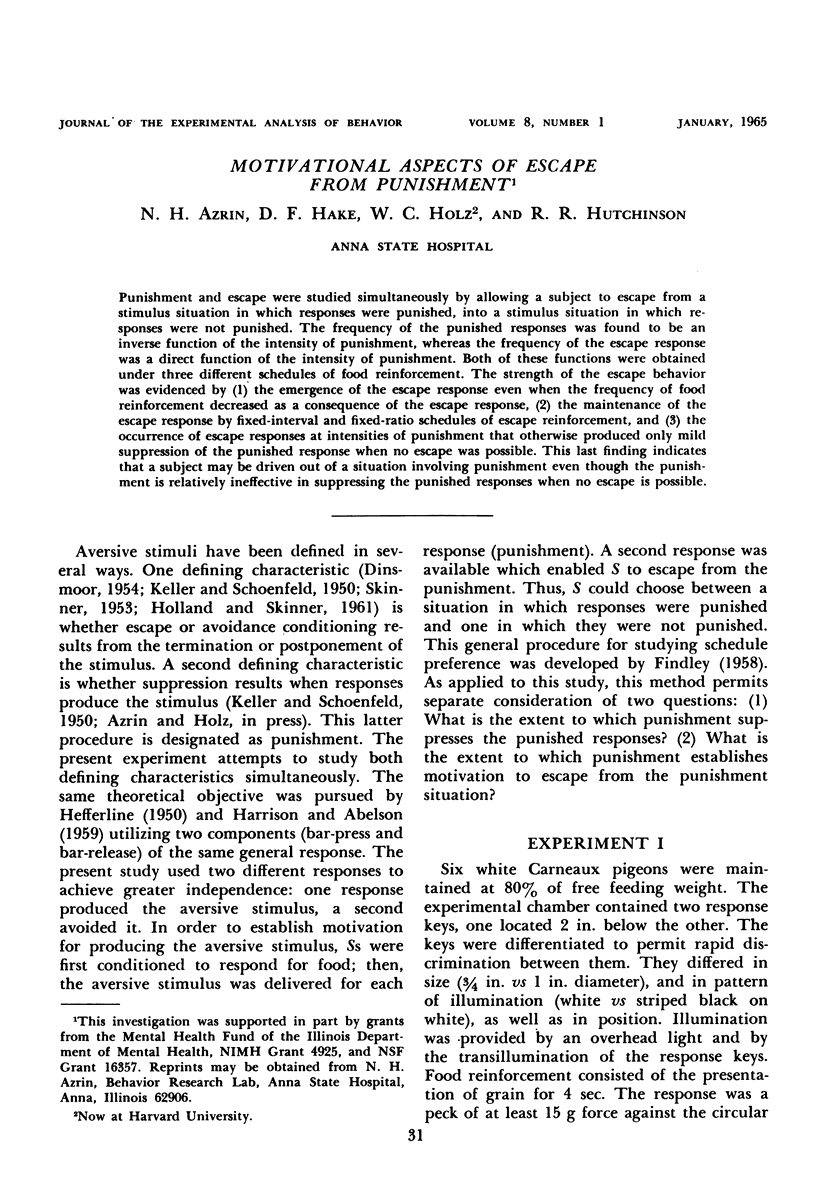
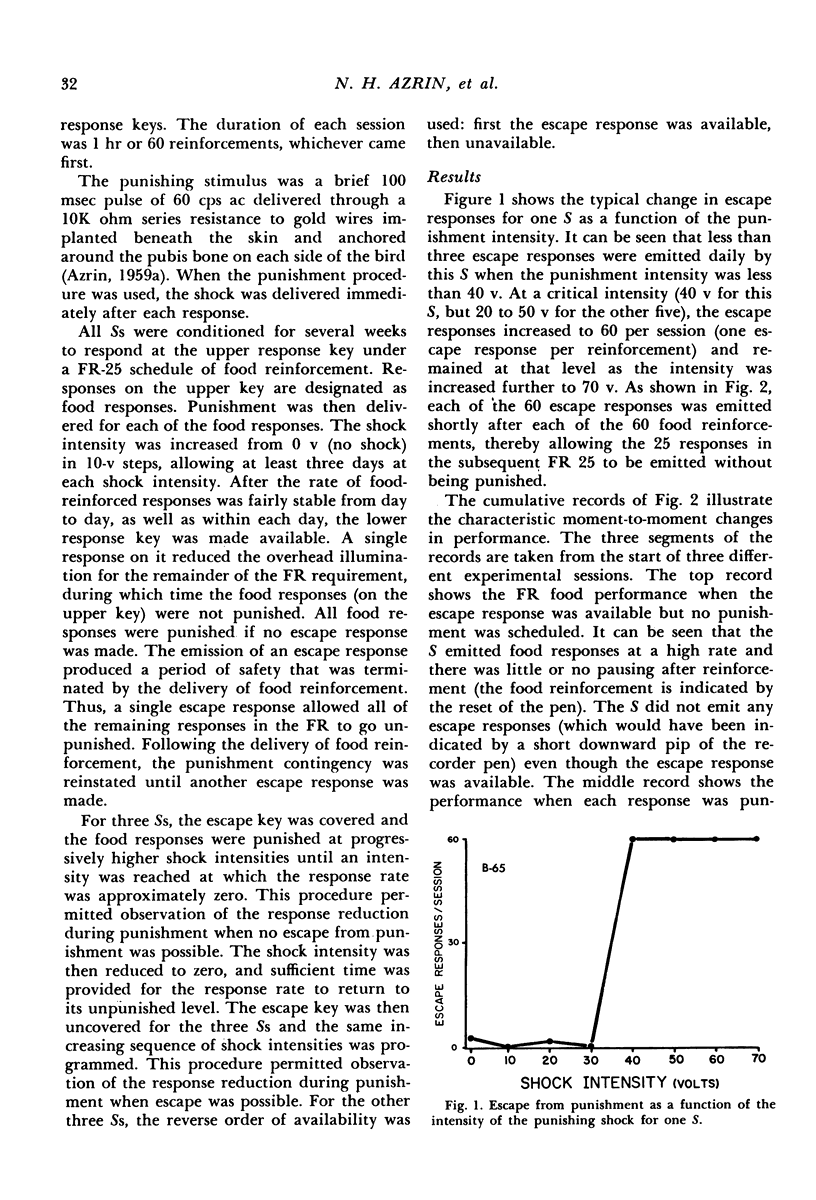
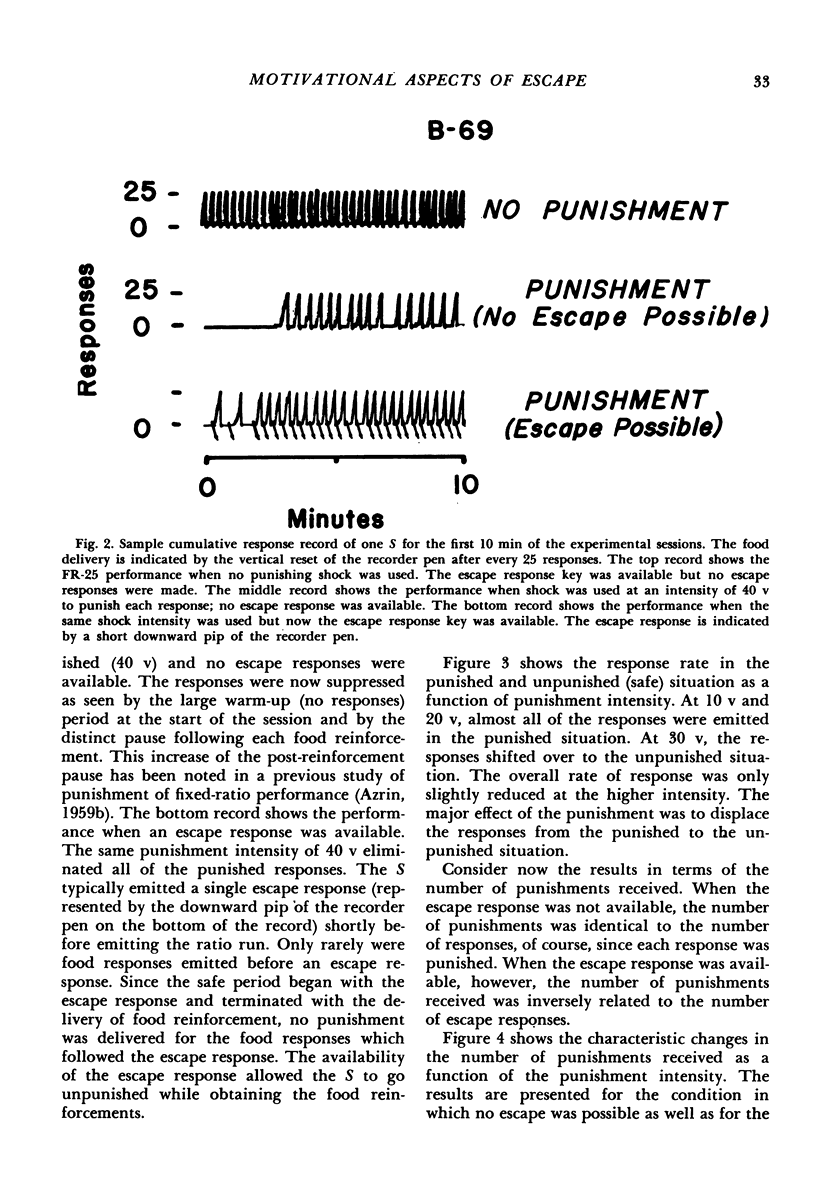
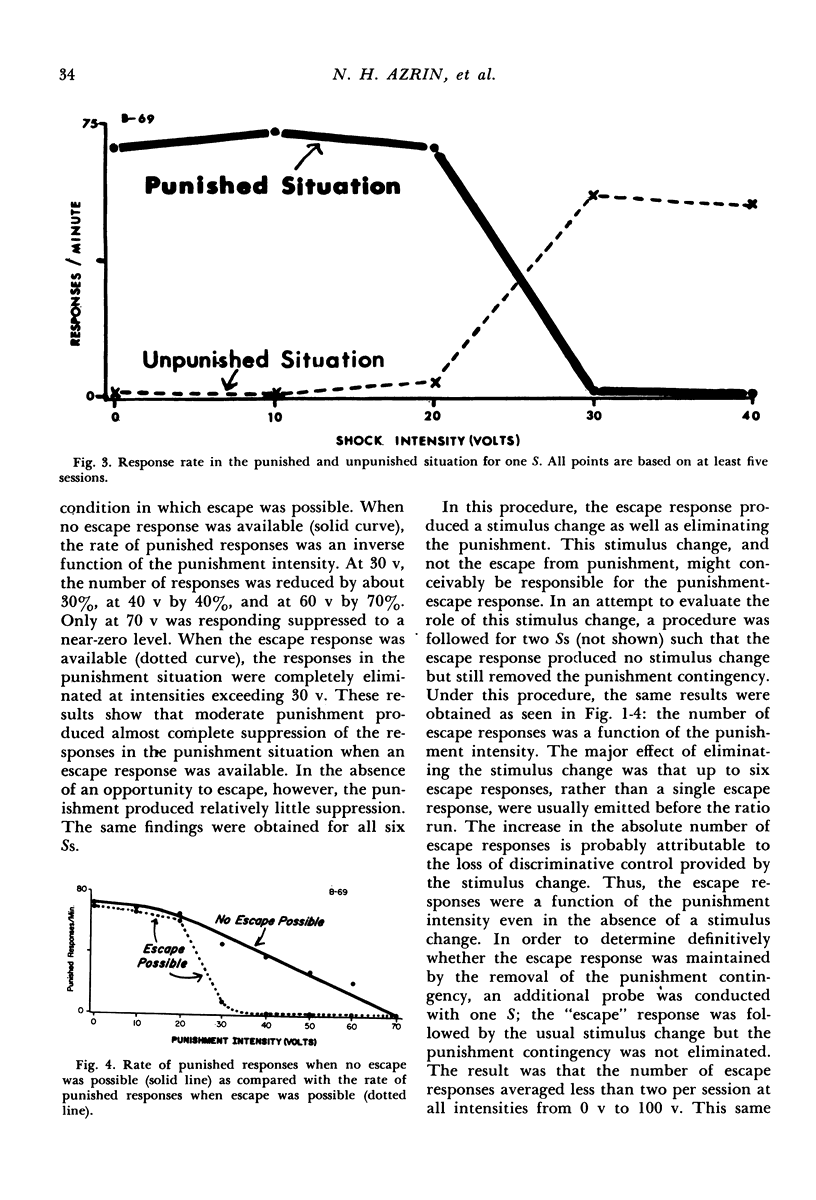
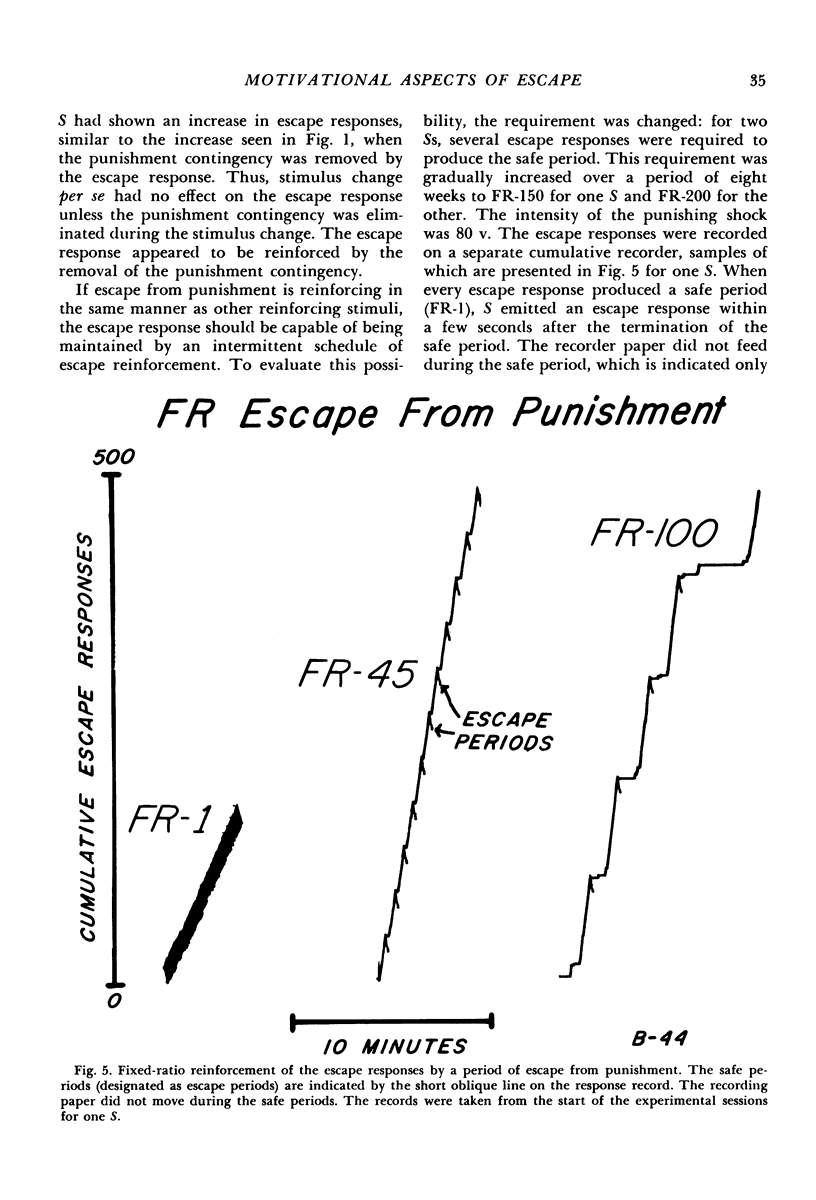
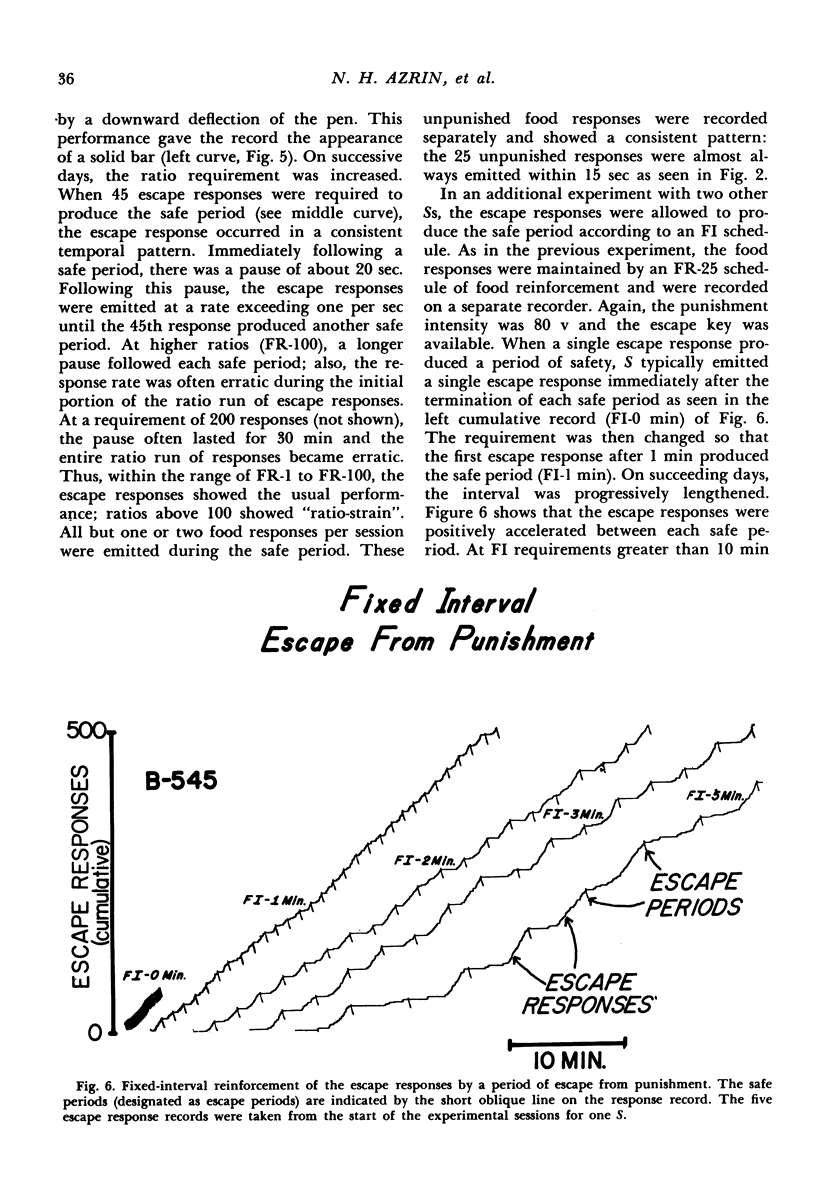
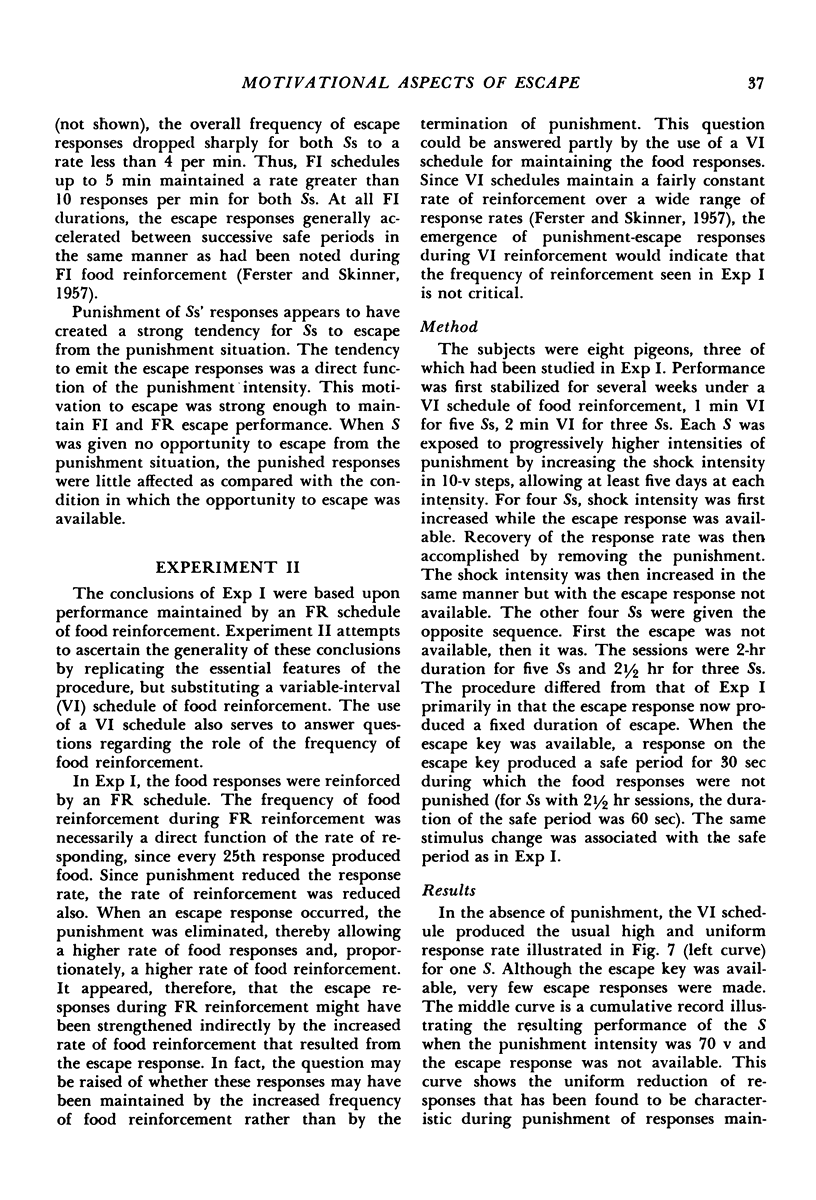
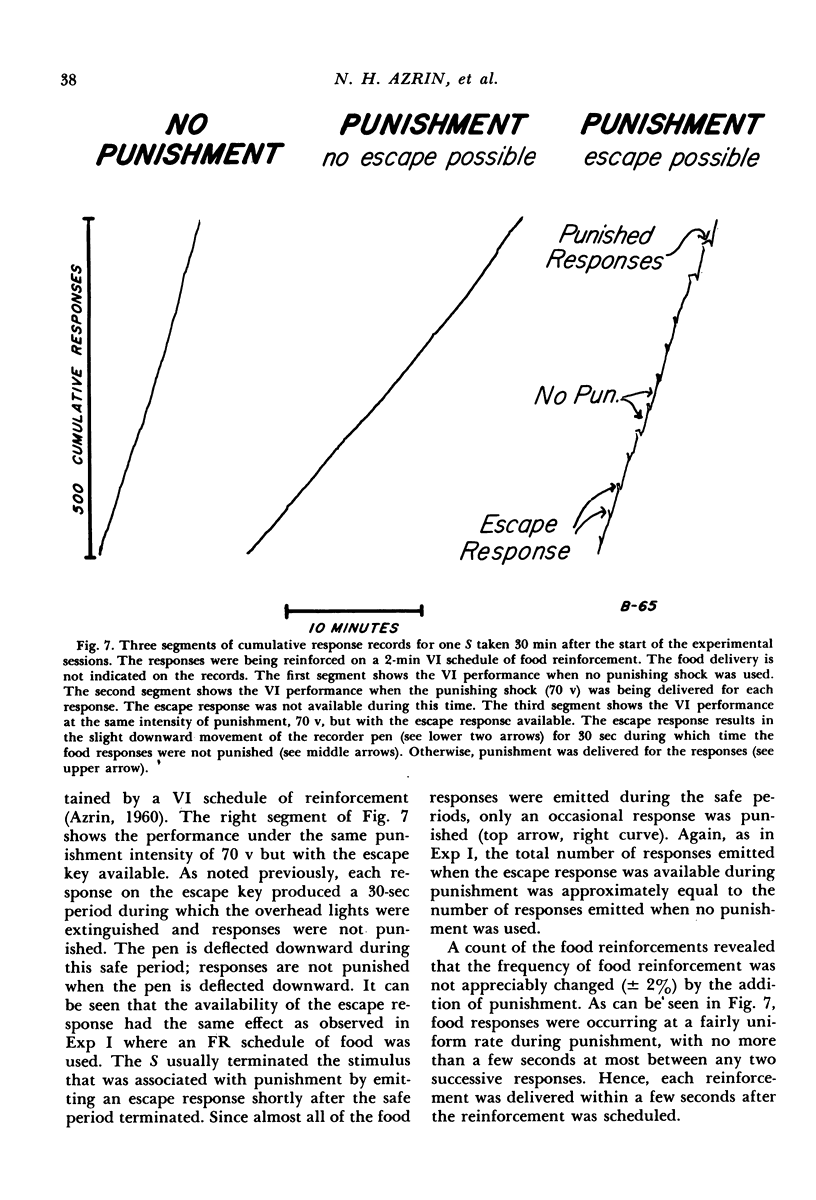
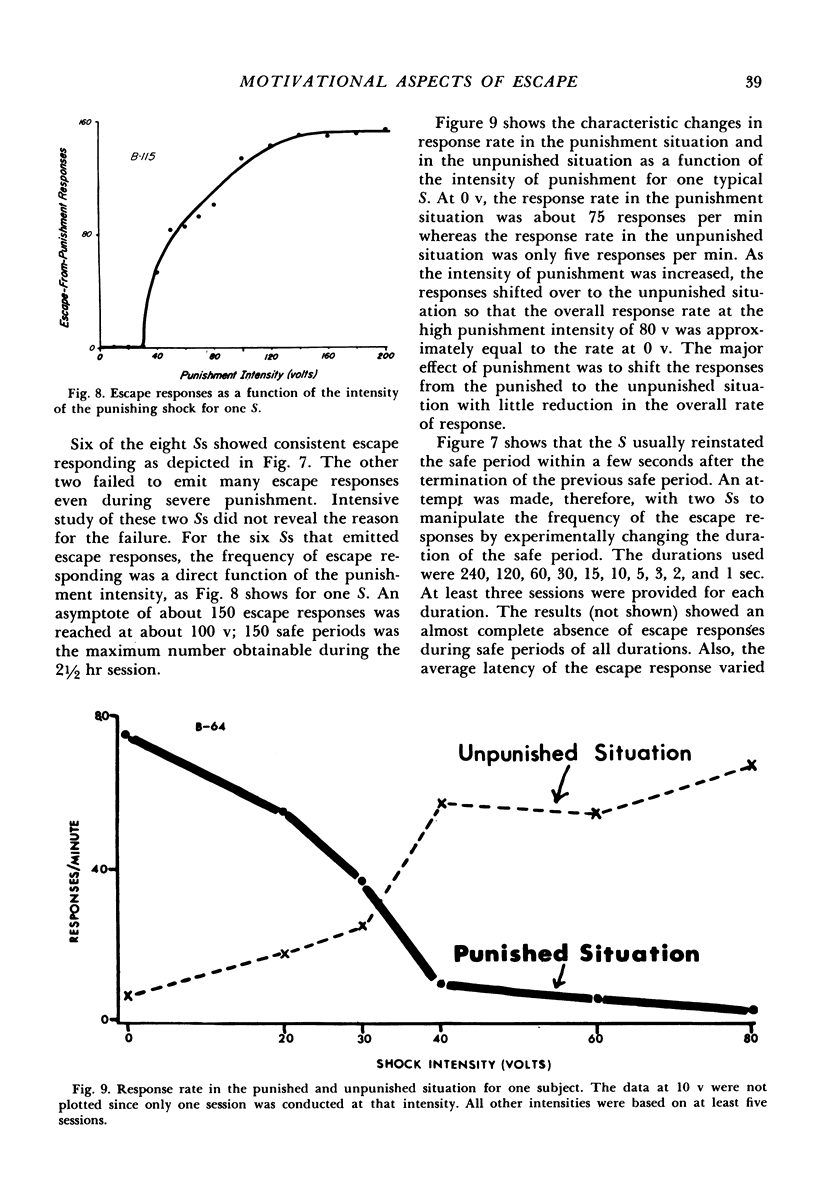
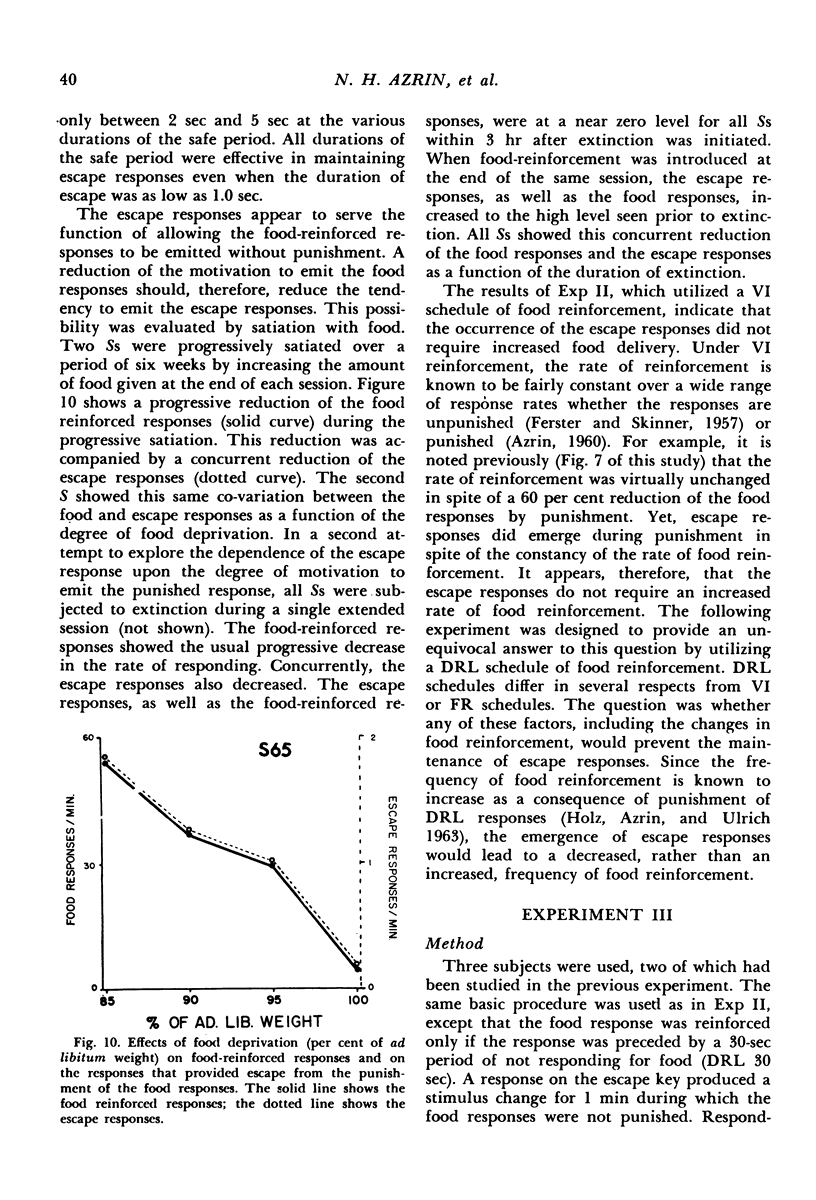
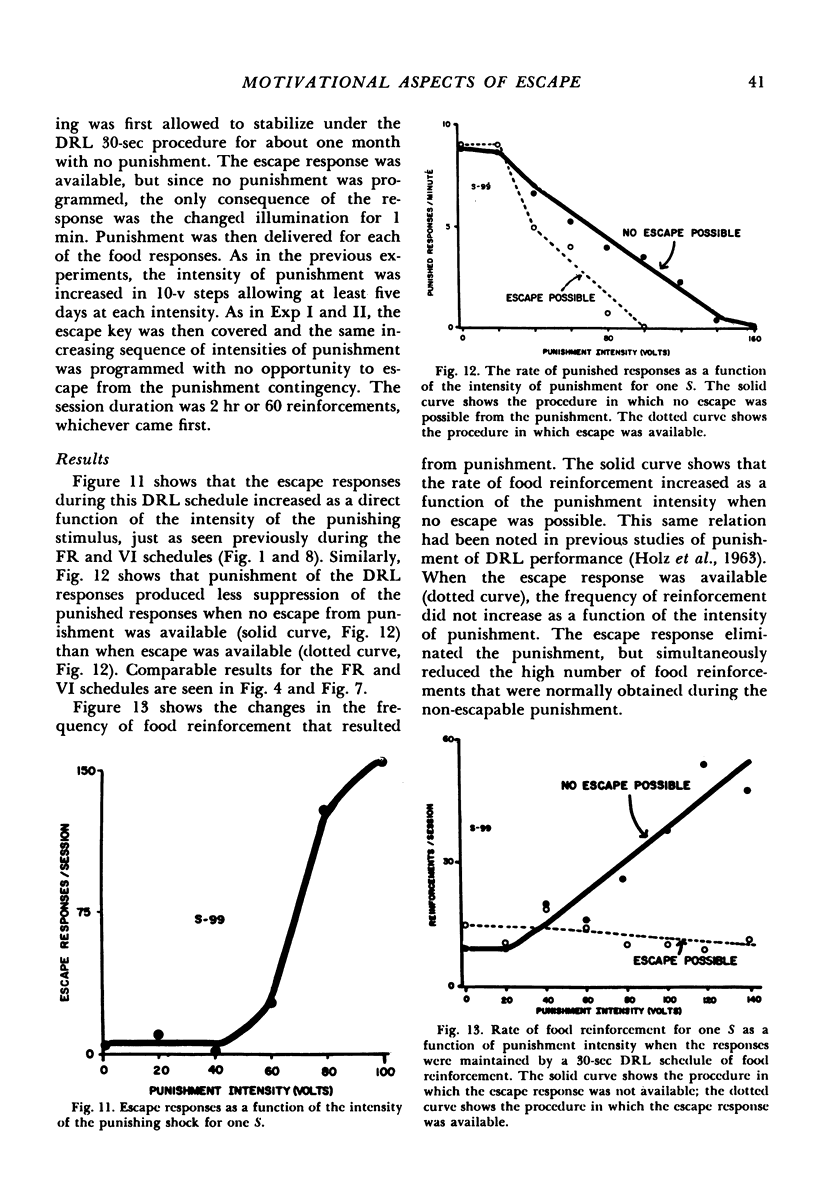
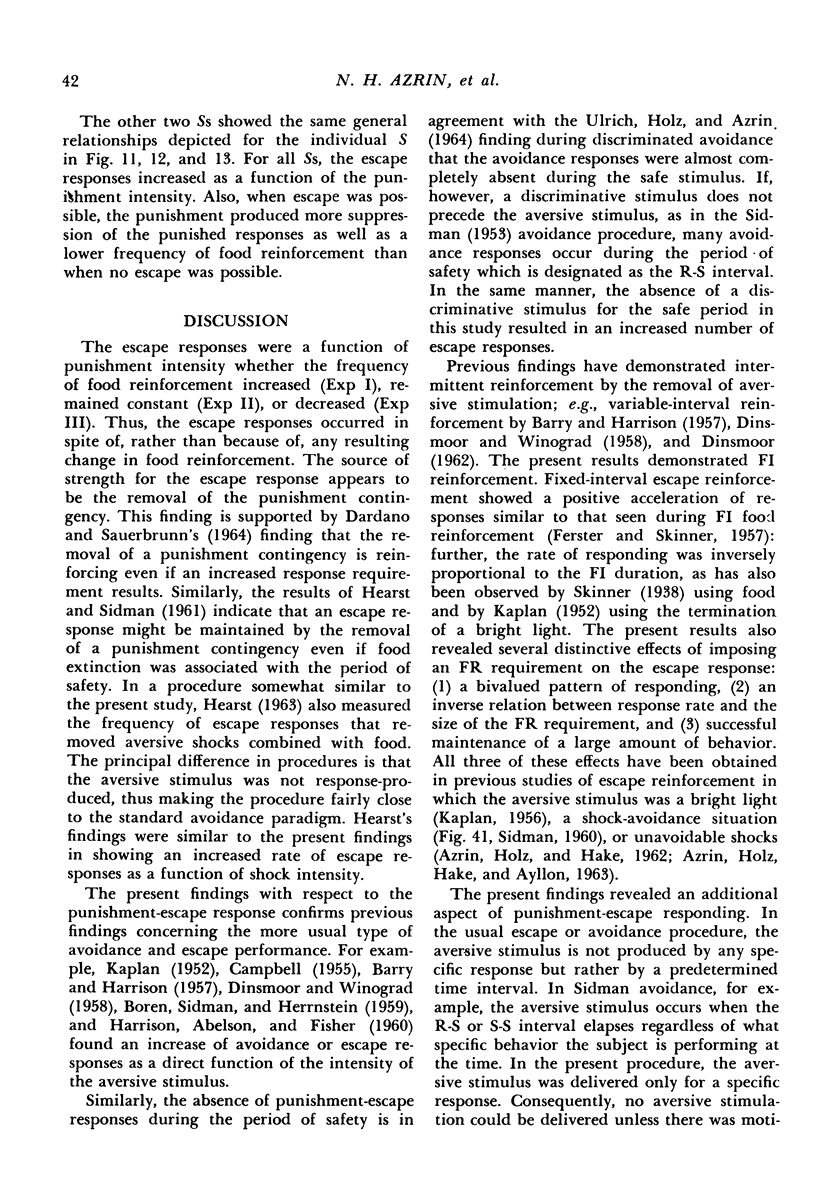
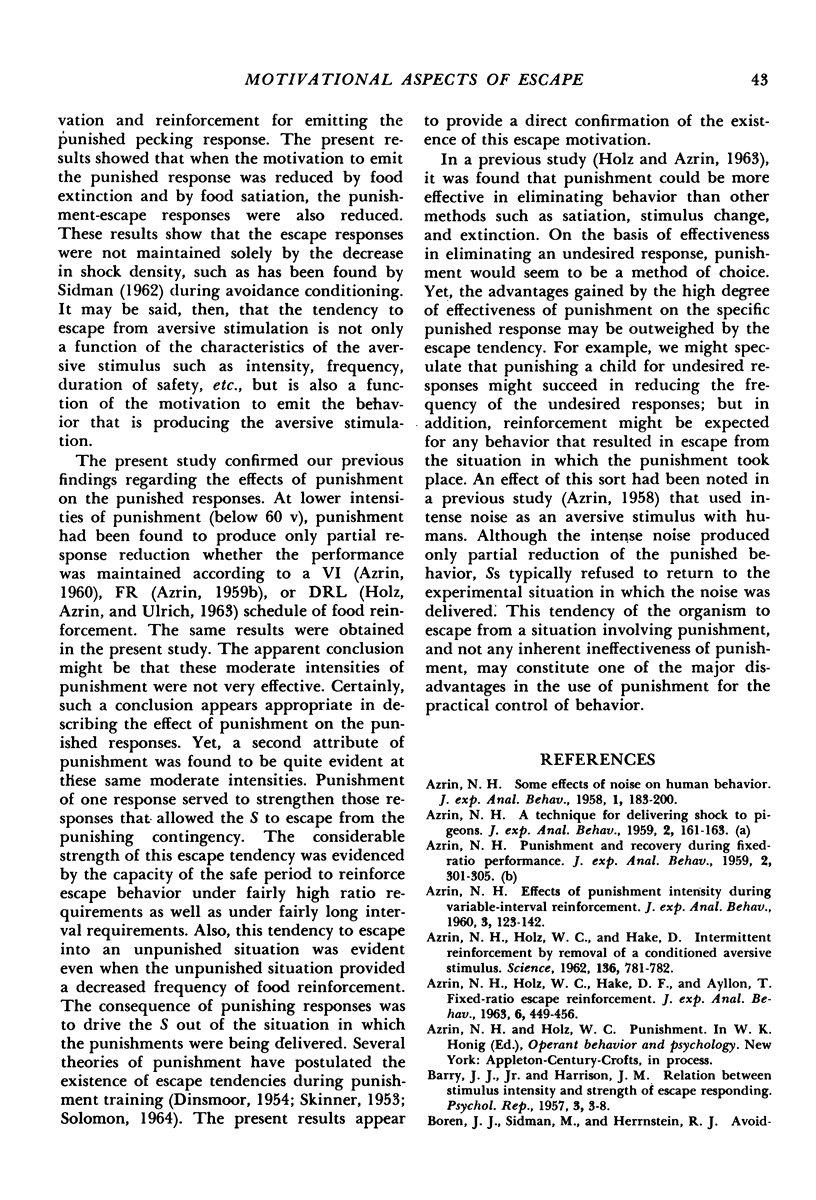

Selected References
These references are in PubMed. This may not be the complete list of references from this article.
- AZRIN N. H. A technique for delivering shock to pigeons. J Exp Anal Behav. 1959 Apr;2:161–163. doi: 10.1901/jeab.1959.2-161. [DOI] [PMC free article] [PubMed] [Google Scholar]
- AZRIN N. H. Effects of punishment intensity during variable-interval reinforcement. J Exp Anal Behav. 1960 Apr;3:123–142. doi: 10.1901/jeab.1960.3-123. [DOI] [PMC free article] [PubMed] [Google Scholar]
- AZRIN N. H., HOLZ W. C., HAKE D. F., AYLLON T. Fixed-ratio escape reinforcement. J Exp Anal Behav. 1963 Jul;6:449–456. doi: 10.1901/jeab.1963.6-449. [DOI] [PMC free article] [PubMed] [Google Scholar]
- AZRIN N. H., HOLZ W. C., HAKE D. Intermittent reinforcement by removal of a conditioned aversive stimulus. Science. 1962 Jun 1;136(3518):781–782. doi: 10.1126/science.136.3518.781. [DOI] [PubMed] [Google Scholar]
- AZRIN N. H. Punishment and recovery during fixed-ratio performance. J Exp Anal Behav. 1959 Oct;2:301–305. doi: 10.1901/jeab.1959.2-301. [DOI] [PMC free article] [PubMed] [Google Scholar]
- Azrin N. H. Some Effects of Noise on Human Behavior. J Exp Anal Behav. 1958 Apr;1(2):183–200. doi: 10.1901/jeab.1958.1-183. [DOI] [PMC free article] [PubMed] [Google Scholar]
- BOREN J. J., SIDMAN M., HERRNSTEIN R. J. Avoidance, escape, and extinction as functions of shock intensity. J Comp Physiol Psychol. 1959 Aug;52:420–426. doi: 10.1037/h0042727. [DOI] [PubMed] [Google Scholar]
- CAMPBELL B. A. The fractional reduction in noxious stimulation required to produce "just noticeable" learning. J Comp Physiol Psychol. 1955 Jun;48(3):141–148. doi: 10.1037/h0046764. [DOI] [PubMed] [Google Scholar]
- DARDANO J. F., SAUERBRUNN D. SELECTIVE PUNISHMENT OF CONCURRENT PROGRESSIVE RATIO BEHAVIOR. J Exp Anal Behav. 1964 Jan;7:51–65. doi: 10.1901/jeab.1964.7-51. [DOI] [PMC free article] [PubMed] [Google Scholar]
- DINSMOOR J. A. Punishment. I. The avoidance hypothesis. Psychol Rev. 1954 Jan;61(1):34–46. doi: 10.1037/h0062725. [DOI] [PubMed] [Google Scholar]
- DINSMOOR J. A. Variable-interval escape from stimuli accompanied by shocks. J Exp Anal Behav. 1962 Jan;5:41–47. doi: 10.1901/jeab.1962.5-41. [DOI] [PMC free article] [PubMed] [Google Scholar]
- Dinsmoor J. A., Winograd E. Shock Intensity in Variable-interval Escape Schedules. J Exp Anal Behav. 1958 Apr;1(2):145–148. doi: 10.1901/jeab.1958.1-145. [DOI] [PMC free article] [PubMed] [Google Scholar]
- Findley J. D. Preference and Switching under Concurrent Scheduling. J Exp Anal Behav. 1958 Apr;1(2):123–144. doi: 10.1901/jeab.1958.1-123. [DOI] [PMC free article] [PubMed] [Google Scholar]
- HARRISON J. M., ABELSON R. M., FISHER G. L. Some relations between the auditory system of the medulla and auditory stimulus functions. J Exp Anal Behav. 1960 Jul;3:207–220. doi: 10.1901/jeab.1960.3-207. [DOI] [PMC free article] [PubMed] [Google Scholar]
- HEARST E. ESCAPE FROM A STIMULUS ASSOCIATED WITH BOTH REWARD AND PUNISHMENT. J Comp Physiol Psychol. 1963 Dec;56:1027–1031. doi: 10.1037/h0046565. [DOI] [PubMed] [Google Scholar]
- HEARST E., SIDMAN M. Some behavioral effects of a concurrently positive and negative stimulus. J Exp Anal Behav. 1961 Jul;4:251–256. doi: 10.1901/jeab.1961.4-251. [DOI] [PMC free article] [PubMed] [Google Scholar]
- HEFFERLINE R. F. An experimental study of avoidance. Genet Psychol Monogr. 1950 Nov;42(2):231–334. [PubMed] [Google Scholar]
- HOLZ W. C., AZRIN N. H. A comparison of several procedures for eliminating behavior. J Exp Anal Behav. 1963 Jul;6:399–406. doi: 10.1901/jeab.1963.6-399. [DOI] [PMC free article] [PubMed] [Google Scholar]
- HOLZ W. C., AZRIN N. H., ULRICH R. E. Punishment of temporally spaced responding. J Exp Anal Behav. 1963 Jan;6:115–122. doi: 10.1901/jeab.1963.6-115. [DOI] [PMC free article] [PubMed] [Google Scholar]
- Harrison J. M., Abelson R. M. The maintenance of behavior by the termination and onset of intense noise. J Exp Anal Behav. 1959 Jan;2(1):23–42. doi: 10.1901/jeab.1959.2-23. [DOI] [PMC free article] [PubMed] [Google Scholar]
- KAPLAN M. The effects of noxious stimulus intensity and duration during intermittent reinforcement of escape behavior. J Comp Physiol Psychol. 1952 Dec;45(6):538–549. doi: 10.1037/h0055989. [DOI] [PubMed] [Google Scholar]
- KAPLAN M. The maintenance of escape behavior under fixed-ratio reinforcement. J Comp Physiol Psychol. 1956 Apr;49(2):153–157. doi: 10.1037/h0048735. [DOI] [PubMed] [Google Scholar]
- SIDMAN M. Avoidance conditioning with brief shock and no exteroceptive warning signal. Science. 1953 Aug 7;118(3058):157–158. doi: 10.1126/science.118.3058.157. [DOI] [PubMed] [Google Scholar]
- SIDMAN M. Reduction of shock frequency as reinforcement for avoidance behavior. J Exp Anal Behav. 1962 Apr;5:247–257. doi: 10.1901/jeab.1962.5-247. [DOI] [PMC free article] [PubMed] [Google Scholar]
- SIDMAN M. Two temporal parameters of the maintenance of avoidance behavior by the white rat. J Comp Physiol Psychol. 1953 Aug;46(4):253–261. doi: 10.1037/h0060730. [DOI] [PubMed] [Google Scholar]
- ULRICH R. E., HOLZ W. C., AZRIN N. H. STIMULUS CONTROL OF AVOIDANCE BEHAVIOR. J Exp Anal Behav. 1964 Mar;7:129–133. doi: 10.1901/jeab.1964.7-129. [DOI] [PMC free article] [PubMed] [Google Scholar]


